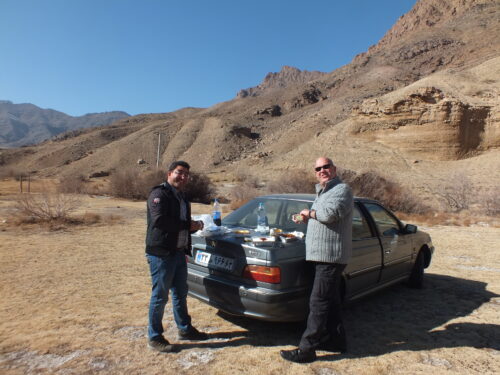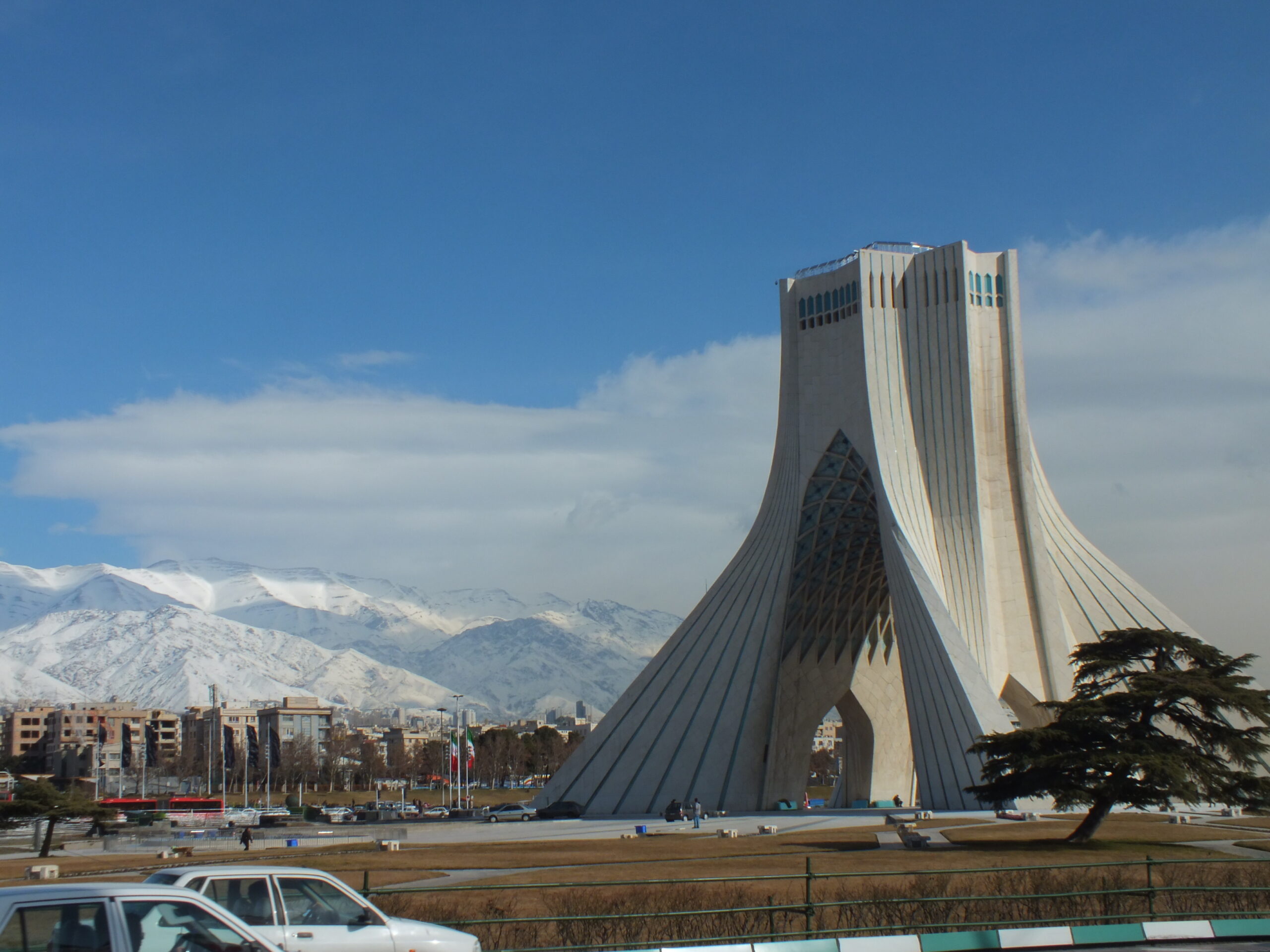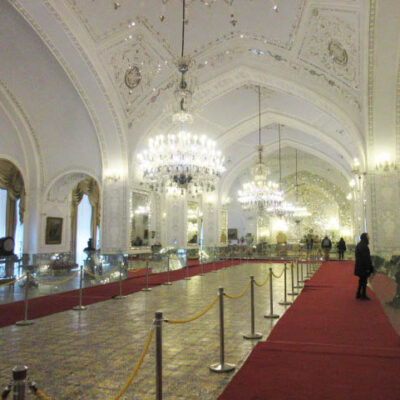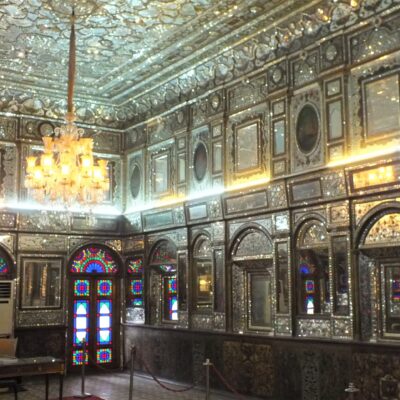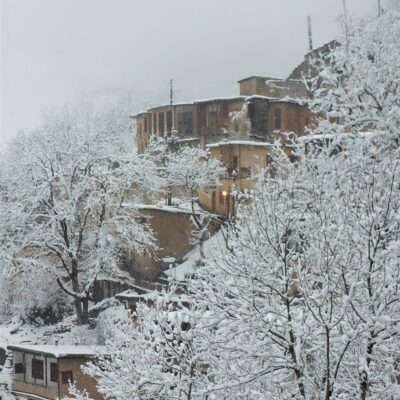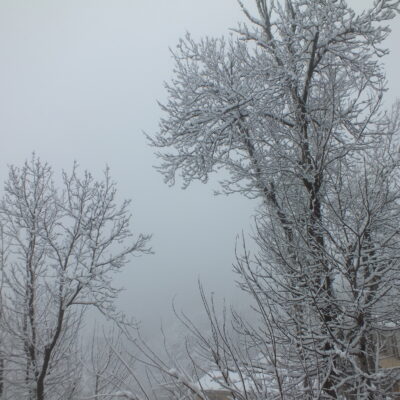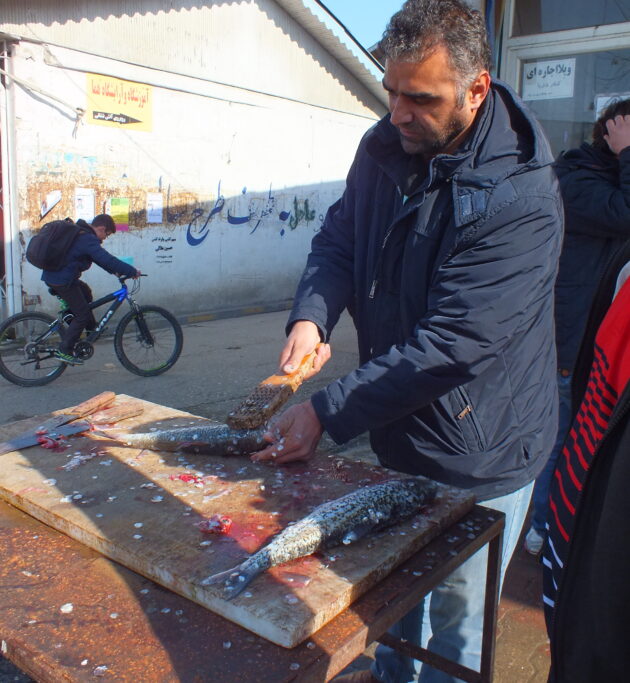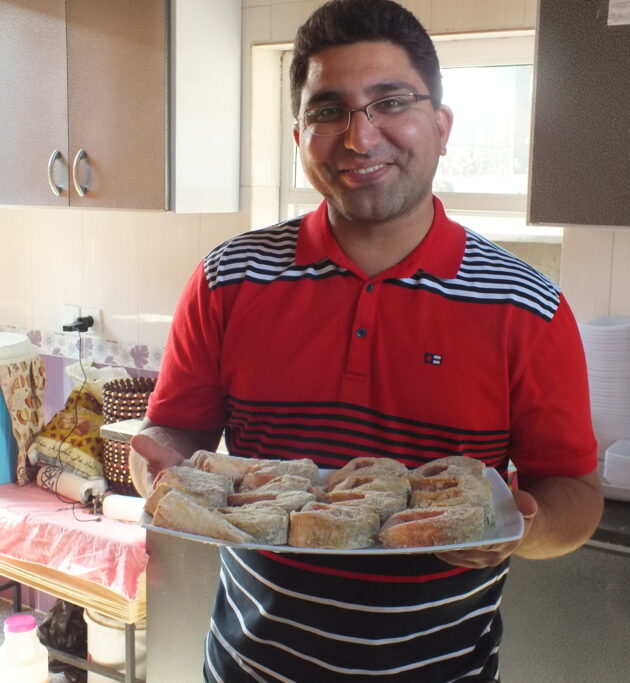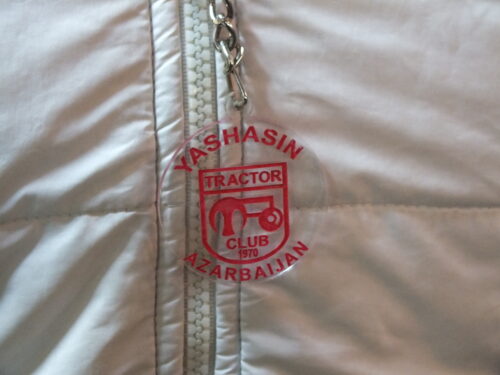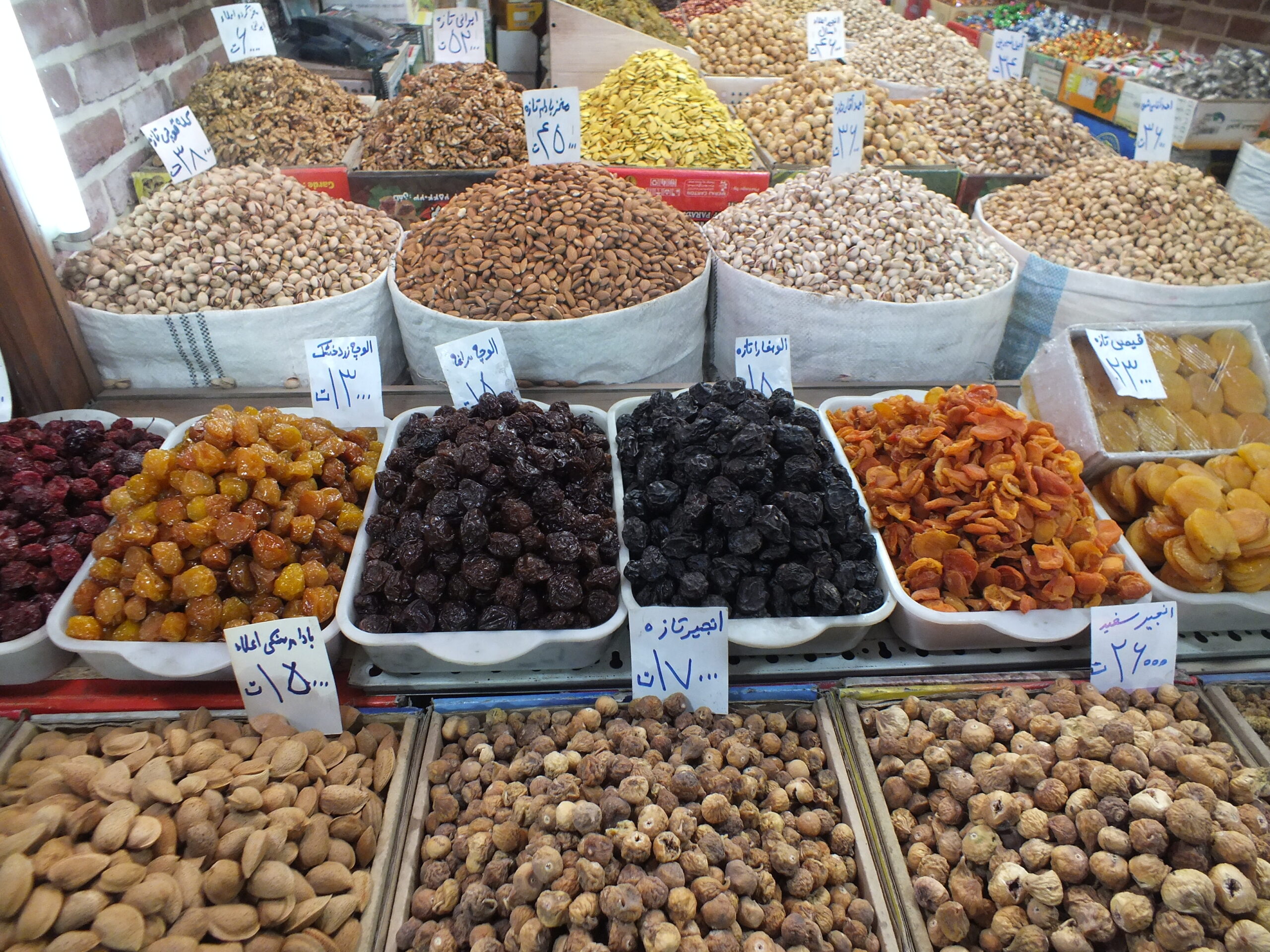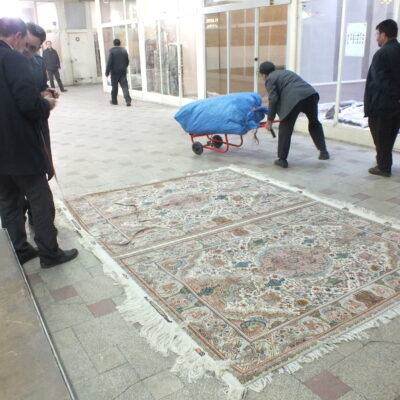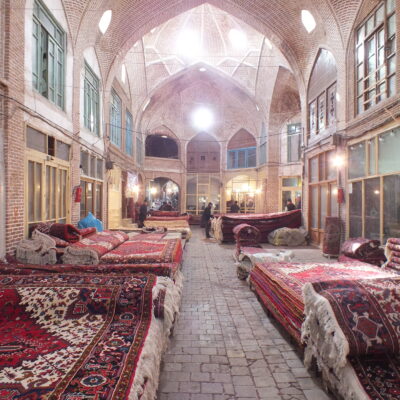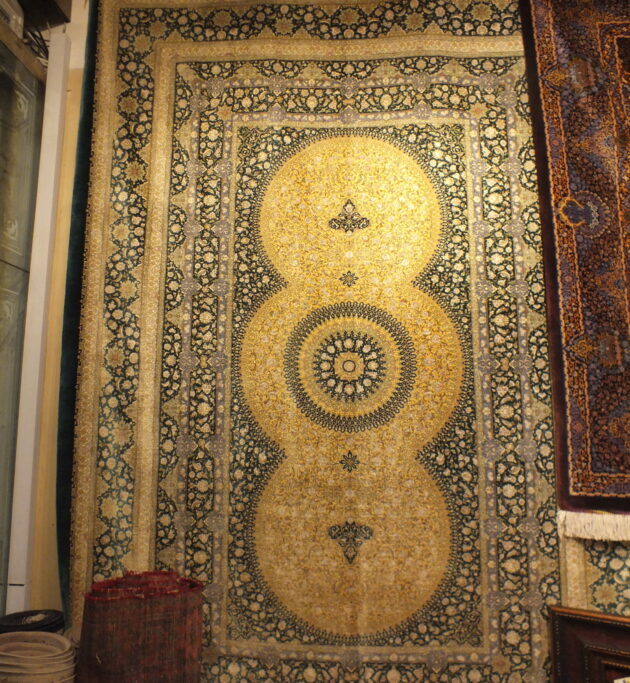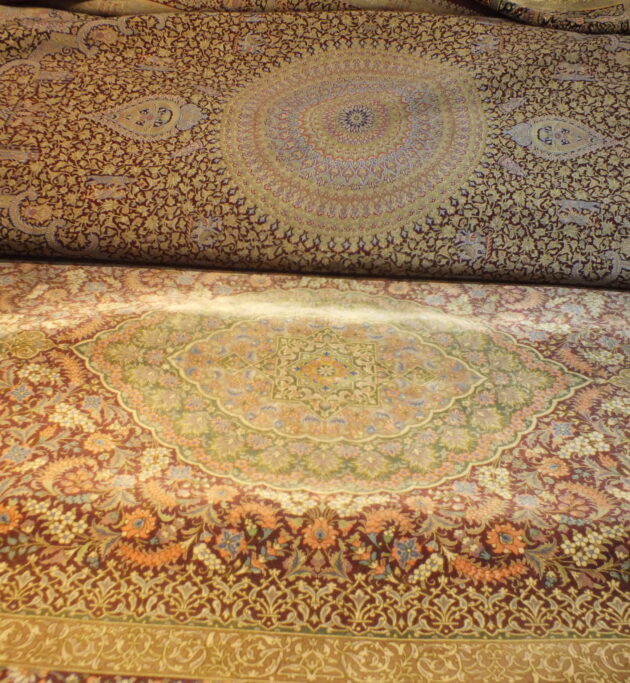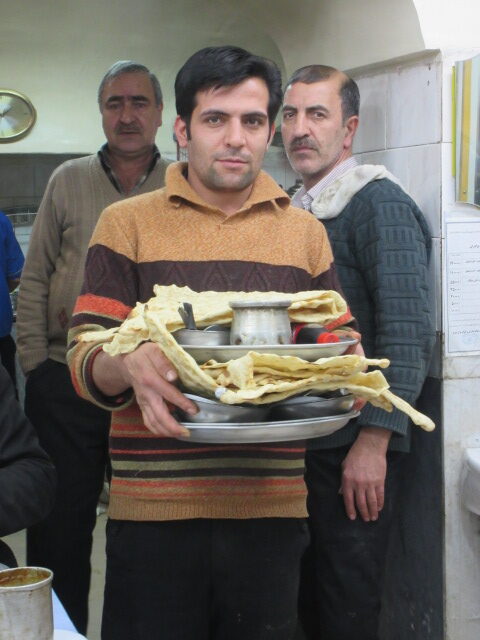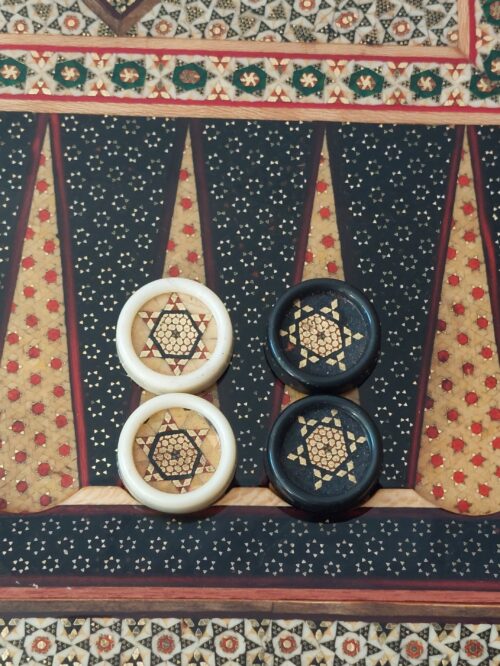From Esfahan a long drive through the Dasht-i-kavir desert, with tea breaks, via Kashan (we liked) and Qom (not so – a strict religious centre) and onwards to Tehran.
We rather liked Tehran. We spent a couple of days and nights wandering around on our own – untroubled except by greetings, Getting a feel for this much-maligned city which was, again, curious but welcoming.
Close to our little central hotel was a small arts centre – gallery, theatre, great little restaurant and a roof “bar” – surrounded by a little park within which we watched groups of teens break-dancing to the latest western music whilst smoking some very illegal cigarettes.
The second day in Tehran offered a strange mixture of experiences.
The morning was spent in the Golestan Palace being dazzled, quite literally, by the Crystal Hall, Brilliant Hall and Mirror Hall.
Spectacular but the Safavids must have suffered from major headaches.
From there to the Central Bank of Iran. On the way we paused to watch 30 – 40 men, each armed with wads of notepaper and multiple phones, gesticulating and seemingly squabbling with each other and those on the other end of the phones. Apparently, this street corner was where the unofficial exchange rates for the whole country was set each day.
In contrast, the Central Bank housed the Persian State Treasury, a collection of jewellery and treasures that makes the British Crown Jewels look a little conservative.
An example; the Daria-e-noor pale-pink diamond therein is about twice the size of the British koh-i-noor diamond and of rarer colour. Amongst other spectacular pieces is the Peacock Throne – more day-bed – studded with enormous gems; immense, priceless and, frankly, uncomfortable-looking.
Perhaps our favourite piece was the Great Globe; 35kg of pure gold set with 51,000 enormous gemstones. The story has it that Nader Shah’s treasurer, after he finished creating many of the other glories of the treasury, asked the Shah what he should do with the remaining gems, only to be waved away with a “use them up on something”. The seas are made up of emeralds with most of the land formed from rubies but Iran, France and England are delineated by diamonds.
On our last day we explored the artisan area of Tehran and, via a rather helpful and generous shop-keeper we found two more khatam marquetry craftsmen making pieces of equal quality to the Esfahan makers. One of them was specialising in chess and backgammon boards. He had several examples that were the size of occasional tables (and not very logistically friendly for us) but he had 2 superb examples in cases…. so we brought those back too.
Unfortunately we don’t have any photos of him, the forex street corner or the fabulous treasure of the Persians.
Perhaps the only disappointment of the trip (and, hopefully, this journal) is the absence of images. You’ll just have to find a way to go yourselves (we thoroughly recommend it) … or just search the internet.
From Tehran we continued into the snowy, forested north via Fuman and tiny, gorgeous Masule up in the pretty Alborz mountains.
This picturesque village was built on the sides of a steep ravine so one house’s roof is their neighbour’s front garden.
From there along the coast of the Caspian Sea – fresh caviar for breakfast, of course – and the purchase of a couple of unidentified fish straight from a fishing boat.
Onwards until we met the Azerbaijan border and turned inland.
After a couple of unexplained stops we discovered what Afshin’s intentions were.
This region is popular with Iranians wanting a cooler climate during the hot summer further south. However February is low season and the little cafes and restaurants were mainly closed with some preparing for the new season.
Afshin found a cute little café overlooking a pretty stretch of the border and demonstrated, again, his excellent culinary skills.
Onwards over the mountains to Tabriz; ever a trading centre and with a bazaar to rival Aleppo , and the last stop on our journey.
Checking into our mid-range hotel (no cheap guest-houses in Tabriz) there seemed to be a frisson of excitement amongst the staff, particularly the girls; the guests seemed to be predominantly young, fit, good-looking men.
The local football team! The catchily named Yashasin Tractor Club – much-lauded in the area as it’s the voice and identity of the large ethnic Azeri population in the region.
Again, no photos of the team, just of the badge.
Tabriz is a business city and rarely on any tour or tourist trail but, again, we found it welcoming and even more curious to our visit.
The bazaar lived up to its reputation. On its edge we found the unsign-posted wholesale market for Persian rugs for the whole country.
The reaction from the carpet dealers (friendly amazement) was only matched, later that day, by the faces of the diners at the bazaaris’ café in the roof of the bazaar as a Russian and English couple came in for lunch. Not a regular occurrence, apparently.
The rule to “always find where the locals eat” (especially market-stall holders) had held good again and we had the best abgoosht of the trip.
It had been a superb trip around just part of this wonderful country with endless glories of the past and lovely, warm, cultured and friendly people.
A place and people that we would dearly love to return to.
Politics allowing!
(See the treasures post for more information about the items we brought back)



